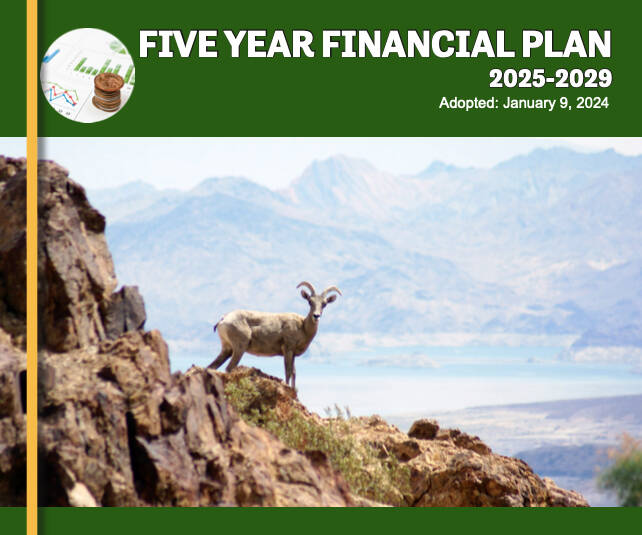City Council hears 5-year financial plan
It’s one of those things that is hard to get excited about but important to the overall health of the city. Kind of like the municipal equivalent of broccoli.
The cruciferous comparison here is to the five-year financial plan presented to the city council at their Jan. 9 meeting.
Back in the bad old days of the financial meltdown of 2007-2009, Boulder City found itself in a bad financial situation. Lots of debt, from bonds issued to build Boulder Creek Golf Club and a $23 million raw water line to service said golf course, and declining revenues. Two major things came out of that period.
One was a 2010 voter-approved initiative that requires approval of said voters before the city can take on debt greater than $1 million. The other was initiating a longer-term financial plan. The city’s Finance Department does an annual financial plan looking at forecasts for a rolling five-year period moving forward. The version of that plan covering fiscal years 2025 through 2029 was presented by Finance Director Cynthia Sneed. While the overall city budget encompasses a number of funds, the five-year plan is centered on the general fund as it is the primary operating budget for tax-supported services provided by the city.
It is important to note that this plan is a series of forecasts. It is not an actual budget.
The big headline number in a forecast like this is that of overall revenue versus projected expenses. And it was this set of numbers that gave multiple members of the council pause with both Steve Walton and Sherri Jorgensen questioning why the accompanying chart seems to show the city spending more than it takes in.
The answer may have been emotionally unsatisfying but it is in keeping with comments made by city staff regularly. When forecasting, they say, the city is very conservative about revenue and very pessimistic about expenses. In other words, they forecast revenue on the low end of expectations and project expenses on the high side.
The real picture does not really emerge until a fiscal year is ended and the actual numbers are tallied. For example, in the 2022 fiscal year, expenses were forecast at about $45 million against projected revenues of around $32 million. The actual numbers? Revenue of about $39 million and expenses of about $34 million. So a forecast of a deficit of $13 million was actually a surplus of $5 million.
The 2023 fiscal year was a similar story. Expenses were projected at about $42 million and revenue at about $36 million. The actual numbers were $40 million in expenses and nearly $50 million in revenue. This inverse relationship between projections and reality has been pretty consistent since at least 2018 with projected deficits that turn into actual surpluses.
That stays consistent in the most current five-year financial plan, with expenses being projected to outstrip revenue —or, at best, for them to be roughly the same —until FY2028 when revenues are projected to spike. Why 2028? That is when an already approved energy storage facility in the Eldorado Valley is expected come online and those lease payments will substantially goose revenues.
This plan is, as previously noted, a series of forecasts and forecasts always come with risks that could make them, well, wrong. Among the acknowledged risks in this report are some things the city has little control over like another pandemic, health insurance costs that go up faster than expected. In addition, a downturn in the national economy resulting in a downturn in tourism and a corresponding decrease in sales tax revenue, which is a huge part of the city’s budget along with some things the city can control. The biggest of those is that the city is planning to build a second fire station. While funds for that construction are part of capital improvement and not directly a drag on the general fund, staffing the station will require hiring nine more firefighters, some of whom will also be emergency medical techs, and personnel funding is part of the general fund.















